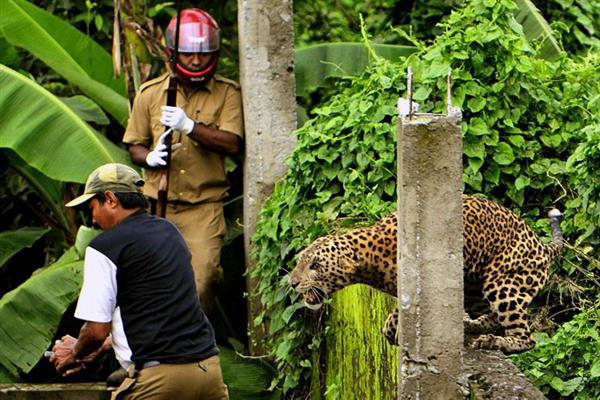Kashmir Magazine By : Kashmir Magazine | Srinagar, Publish Date: Friday, January 14, 2022 1:13:31 AM | Updated Date : Friday, January 14, 2022 1:13:31 AM

Even though the incidents of man-animal conflict have shown a steep fall in Kashmir, the rising incidents of movement of wild animals into the residential areas in the Valley remains a cause of concern for the wildlife department.
Figures reveal that a minor girl from Central Kashmir’s Budgam district among 33 persons were mauled to death across Kashmir in the last four years. Figures suggest that in 2017, 8 persons were killed by wild animals, 11 were killed in 2019, 5 in 2020 and 9 in 2021. As far the injuries, year 2017 saw highest number of injures at 120 followed by 83 in 2018, 85 in 2019, 87 in 2020 and 57 in 2021.
Despite the fact that deaths and injuries due to man-animal conflict have come down in the past five years in Kashmir’s major towns like Pulwama, Shopian, Ganderbal, Budgam and even Srinagar, the major concern for the wildlife department remains increased movement of wild animals in residential areas.
Officials said that the movement of wolves, leopards, tigers, black bears and monkeys in residential areas of Kashmir towns have shown an increased trend, which was a cause of worry for the wildlife department.
Chief Wildlife Warden J&K, Suresh Kumar Gupta said that in the UT, four animals are in conflict with the humans—leopard, black bear, snake and monkey.
“Snake and monkey related incidents are reported in Jammu region, leopard and black bear related conflict is more in Kashmir region,” he said, adding that the conflict increased due to population expansion in areas close to forest and wildlife sanctuaries.
He said the conflict takes place due to human intervention into the habitat of wild animals. “We have already issued do’s and don’ts and have urged the people to venture out in the areas close to forests in groups and avoid going into the forest areas along without sticks and lights,” he said.
He, however, said due to lack of manpower, at some places it becomes difficult to reach to the spots in time, where wild animals make their entry.
“To address these issues, we have set up joint control rooms with the forest department in districts and zones. This has been done because of the fact that we have only 600 people as our staff in entire J&K,” he said.
He said that during snowfall, wild animals like black bears face dearth of food and it was because of that, the animal comes out. “Usually bears used to go into hibernation in winters but due to climate change, there is a behavioral change among bears that pushes them out of forest areas,” he said, adding that people shouldn’t attack wild animals and wait for wildlife officials who are trained to tranquilize the animal.
He said deaths of humans in man-animal conflict have decreased considerably. “We have procured the latest equipment to tranqulize animals, besides vehicles have also been added to the fleet. We have also focused on plantation and adding availability of fruit etc in the forest area and in sanctuaries,” Gupta said.
Meanwhile, senior scientist and Head of Wildlife Science Division at SKAUST-K, Dr Khursheed Ahmed said that there are many reasons for man-animal conflict especially that of leopards and black bears.
“These animals have come out of their natural habitat called habitat shifting. They have adapted to live in human dominated landscapes because of the easy food availability,” he said.
He said that there is no scientific evidence to prove that their population has increased, but some facts show that the population of leopards and black bears has increased which has led to the man-animal conflict.
He said conversion of paddy lands into orchards is also one of the main reasons for attracting black bears into residential areas. “Fruit is a major attraction for black bears especially in autumn. The bears want to eat as much fruit as possible before going into hibernation,” he said, adding that bears become voracious fruit eaters in autumn.
“This is the main reason why such man-animal conflict takes place in autumn,” he said.